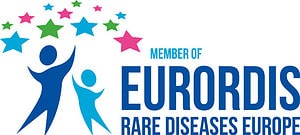Medical Records
Gathering and maintaining a complete set of medical records helps you get the most out of each doctors appointment, and also serves as a sound defense to any accusations of Medical Child Abuse that might arise.

The Importance of Medical Records
Gathering and maintaining a complete set of medical records is not only a sensible practice, but helps you be prepared and get the most out of each doctors appointment. Also, having organized records also serves as a sound defense to any accusations of Medical Child Abuse that might arise. It is much easier to both collect and correct medical records before any issues arise. Moreover, having medical records on hand might actually deter a physician from considering Medical Child Abuse as a possibility, for it is much harder to argue with a third-party lab result than a parent.
The HIPAA (Health Insurance Portability and Accountability Act of 1996) is legislation that provides data privacy and security provisions for safeguarding medical information. Understanding your rights under HIPAA will help you navigate the management of your medical records and how your information can be tracked, stored and used.
Understanding Your Rights Under HIPAA
Medical records are your property and can be obtained from the medical records department of any institution, hospital clinic or doctor's office where you or your child is seen. It is a good idea to ask at every visit for a summary letter and copies of all laboratory results to be provided to you during an appointment, since doctor's offices generally do not charge a fee when such documents are provided during an office visit. There may be a copying charge required when requesting them from a centralized medical records repository at a hospital or other facility; however, such fees generally are waived if the records are sent directly to a primary care physician or pediatrician. Be sure to ask the specialist's office for a copy of the clinic note if it is not automatically sent to you after the appointment. In most cases, your request for copies must be granted within 30 days.
You also have the right to be informed by your doctor or insurance provider, who has a seen your medical records. As a rule, your information cannot be used for reasons not directly related to your care without your consent. You can also set restrictions as to how your information is used.
Below are additional resources from the U.S. Department of Health and Human Services outlining your rights under HIPAA:
Correcting Errors in Medical Records
Timely gathering and review of medical records is crucial to prevent errors from persisting in the patient's hospital or physician records. If errors are found upon review, it is important to contact the provider as soon as possible. After obtaining copies of your medical records, you can request to have any wrong information in your file updated, or add any information that you feel is missing or incomplete.
It is always a good idea to get a copy of the "complete" discharge summary before leaving the emergency room or hospital after an admission, especially one in which there have been disagreements over a diagnosis or treatment. Make sure to read this summary and ask that any incorrect information be changed before you leave. It is much easier to change the preliminary summary before you leave the hospital rather than trying to correct or change information once it is part of the patient's official medical record. Do not be surprised or upset to find misleading or inaccurate information in the discharge summary, especially when there have been disagreements among physicians or with the patient or caregivers over diagnosis or treatment, for the summaries are often written by fellows or residents. Be polite but insistent that corrections be made before you leave, even if it might require involvement of a hospital administrator.
Generally speaking, medical providers have as much of an interest in accurate medical records as patients do, and physicians in the office setting often will correct records upon request. However, in the event there is a disagreement between the physician or hospital and the patient, there is a process under federal law that requires amendments to be included with the patient's medical records.
The Center for Democracy and Technology has put together an excellent FAQ relating to obtaining and correcting medical records, which may be found here. Hospitals and doctors' offices also are required to have procedures relating to patient requests for medical records, so be sure to check with your provider as well regarding office policies.
Paper and Electronic Options
Maintaining key medical records in an organized manner allows for medical personnel to obtain a quick overview of your or your child's medical situation. Labs and test results also can "speak for themselves," thus saving a patient or family from having to explain the medical situation.
While it is wise to maintain a copy of all medical records in your home files, it is unnecessary and potentially detrimental to bring all medical records to every appointment. Thick binders filled with every medical test result are not only confusing, but also may be considered a red flag for Medical Child Abuse. Streamlining the materials therefore is very important.
The MyMito App platform can provide a solution for storing your medical records and give you the ability to organize and share your information electronically with those who need access. The MyMito App platform is HIPAA compliant and allows you to securely manage all of your medical records in the palm of your hand.
Protocol Letters for Emergencies
When children and adults with mitochondrialRelated to the mitochondria. disease become ill, their mito specialistA doctor that focuses on one branch of medicine. often will instruct them to seek care, usually at the Emergency Room, during certain situations or types of illness. Since few, if any mitochondrial specialists typically are available in the ER during times that treatment is needed, it is imperative that themMito specialist's instructions be communicated via a protocol letter or a letter of medical necessity. This letter is one that the patient or family would give to emergency personnel prior to treatment. It should include the date, patient’s full name, and specialist's name and phone number for after hours, in addition to a detailed description of the patient's diagnosis and treatment protocol during illness or other emergencies.
If an emergency situation arises, it is always helpful to go to an Emergency Room where the PCP or specialists are on staff or have privileges. Having the PCP or specialist call ahead to the ER to alert the staff regarding the patient's mitochondrial disorder also is a good idea; hopefully, this will prompt the ER staff to listen to the family or caregivers about the patient's rare medical condition and follow the treatment protocol. The ER staff members also are more likely to accept information or recommendations from one of their own practitioners than from a physician at another medical center.
MitoAction has sample protocol letters, however, please keep in mind that any protocol letter will be disregarded unless it is personalized to the specific patient and signed by the mito specialist. You can share these templates with your doctor ada have them customized for your needs, and signed by your physicians. Also, protocol letters should be updated annually so that ER personnel can trust that the information and treatment plan are current.
Failure to follow an ER protocol letter resulting in serious injury or death may be grounds for a medical malpractice lawsuit. Of course, no one wants to see the situation get to that point, so it is crucial to communicate effectively with the ER team about use of the protocol letter. If the ER team refuses to call members of the patient's usual medical team, you may want to consider calling the mito specialist yourself. Make sure to keep calm, however, and communicate as best you can the importance of the instructions contained within the ER protocol letter.











